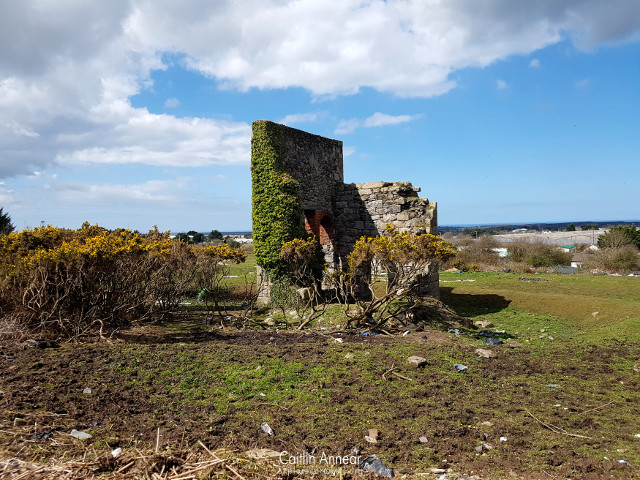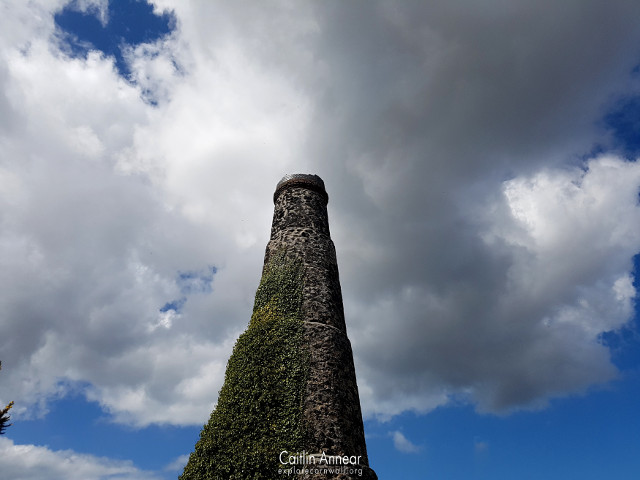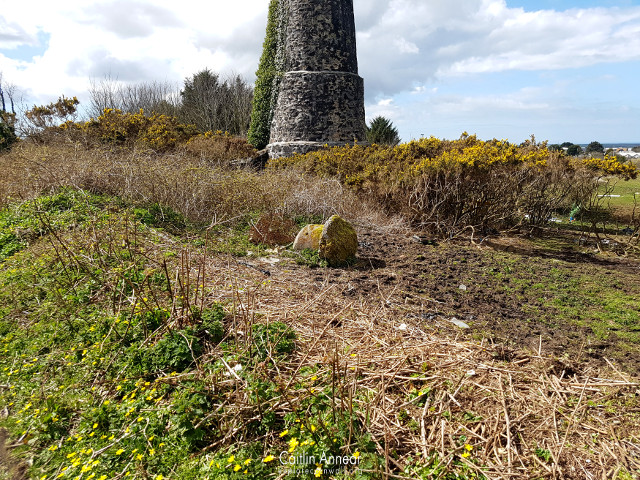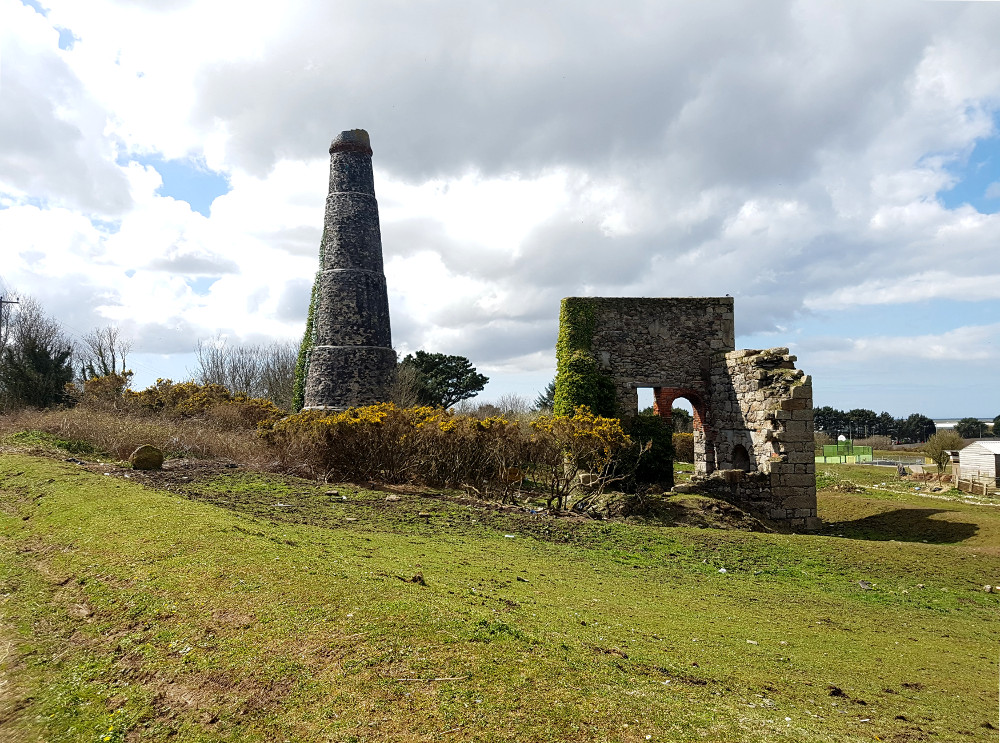On the northern edge of Carn Brea hill sits the lone engine house of a once large and successful mine.

It formed in 1832 following the amalgamation of a number of small works: Wheal Fanny, Tregajorran, Barncoose and Wheal Druid, becoming the largest sett in the area. From its inception, the mine was incredibly successful, with 10,372 tons of copper being sold in 1847 for £73,445 (£4,437,327 today), 6.65% of the copper production in Devon and Cornwall that year. However, this didn’t last for long, with copper production declining from the 1850’s onwards, while tin production did increase. From 1860, the Tregajorran section was the deepest, while Barncoose produced the most tin. Running costs of the mine remained high due to the number of shafts and cost of powering all the engines that went with them. In 1873 the Barncoose section was abandoned entirely due to mounting costs. In 1892 the mine had 18 steam engines and 27 boilers .

1896 saw Carn Brea amalgamated with its neighbours Tincroft and Cook’s Kitchen, becoming Carn Brea and Tincroft Mine. However, while the output from the sett increased, profits continued to dip, partly caused by the use of increasingly elderly machinery. The Carn Brea section of the mine was closed for good in 1913-14, with the remainder of Tincroft shutting in 1921.

The mining sett has a lot of shafts (or did), and due to its amalgamations this can be a tad confusing.
Harvey’s Engine (335 fathoms/316m), Martin’s East (350 fathoms/640m), Downright (335 fathoms/316m), Chappels, Highburrow, Highburrow East (390 fathoms/713m), Highburrow West (325 fathoms/594m), Dunkin’s, Martin’s, Roger’s, Old Sump, Western, Fanny, New (228 fathoms/417m), Miner’s, Teague’s, Trestrail’s, Polkinghorn’s, Pearce’s, Poddler’s, Man Engine, Monument (140 fathoms/256m), Barker’s, Druid Engine and MacDonald’s (96 fathoms/175m).
Tincroft North, Barncoose, South, Highburrow, Martin’s, Dunkin’s, Chappel’s, Teague’s Druid’s and Pryce’s.
1833-96
237,493 tons (241,304,029 kg) of 7.5% copper, 29,600 tons (30,074,989 kg) of tin, 4,140 tons (4,206,434 kg) of arsenic and 390 tons (396,258 kg) of mispickel.
1906 Carn Brea and Tincroft
3,142 tons (3,192,419 kg) of arsenic and 390 tons (396,258 kg) of tungsten.
1912
938 tons (953,052 kg) of tin, 277 tons (281,445 kg) of arsenic and 12 tons (121,993 kg) of tungsten.

The only prominent feature left on the mine site it the remains of the 32″ stamps and its chimney. Built in 1837, originally to drive 41 heads of stamps, but eventually had 84 running by 1850. The boiler house would have stood at the rear and housed four boilers, however there is no evidence of this remaining apart from the unique telescope stack. During the stabilisation of the stack, blue bricks replaced the old Bridgwater red bricks. Another 34″ stamps was built just to the south-west in 1871-2, which together with the remaining stamps ran 208 heads of stamps. No trace of this remains today.
The engine house sits on private land, but is clearly visible from a public footpath.
There is parking dotted all over the industrial estate.
Brown, K. and Acton, B. (2007) Exploring Cornish Mines: Volume One. 4th edn. Truro: Landfall.
Cornwall Archaeological Unit (1991) Engine House Assessment: Mineral Tramways Project. Available at: http://map.cornwall.gov.uk/reports_event_record/1991/1991R008.pdf(Accessed: 17 March 2018).
Dines, H. G. (1956) The metalliferous mining regions of south-west England. British Geological Survey.
Hamilton-Jenkin, A. K. (1963) Mines and Miners of Cornwall: X Camborne. Truro: Truro Bookshop.
Morrison, T. (1980) Cornwall’s central mines : the northern district, 1810-1895. Penzance: A. Hodge.
Nance, D. and Brown, K. (2014) A complete guide to the engine houses of West Cornwall.Gloucestershire: Lightmoor Press.
